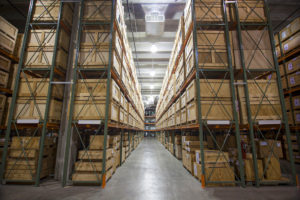
From Balsa to Bamboo – The Commercial Aviation Industry / By Abdol Moabery
Author: gatelesis
The Commercial Aviation Industry and Its Significance
I read once, the human capacity for burden is like bamboo – far more flexible than you’d ever believe. The question is whether this principle can be applied to a company or even an industry. There are certain companies and industries where this would not apply, but after decades of working in the very cyclical commercial aviation sector, I suggest that like bamboo, the market forces that drive the sector are becoming increasingly flexible in nature. Could this be derived from an increase in available data, the globalization of the market, or the amount of thirsty liquidity on the sidelines?
For a period of almost 40 years, the cycles were almost predictable. When I founded GA Telesis, we were already in the midst of a sector downcycle, which I feel started somewhere in late 1999 through early 2000. This was accelerated by the attacks on 9-11, followed by SARS, global conflict (wars in the Middle-East), and sky-rocketing oil prices. While all of these elements were regional in manner, they were global in scope and caused a severe impact on the industry. As the industry recovered late in the first decade of 2000, the Great Recession rolled in like a tidal wave and while much of the impact was similar, there was one fundamental difference; there was no liquidity in the market.
The commercial aviation industry runs through new recessionary intervals about every 7-10 years. As was evident in the examples above, these could be accelerated by major events, be they regional or global in nature. There is a litany of these accelerants, including global and regional economic recessions, major catastrophic events, epidemics, terrorism, war, and volatile oil prices. Generally speaking, if something significant happened in the world, we could expect an impact on the commercial aviation sector.
So, what happens when all those things occur and there is no sign of an industry down-cycle? Now don’t get me wrong, there are market pressures, airline bankruptcies, and there are plenty of regions not doing well. However, unlike in years past, the market does not react as it once did. Let’s take the most recent attack on an oil tanker in the Persian Gulf. The result was an immediate short-term spike in oil prices, but we haven’t even hit a 12-month high in pricing. Could it be that the market now gets it? Could it be that like bamboo, the market is far more flexible than one might believe?
There have been countless examples throughout the history of commercial aviation, where an event or series of events pushed the aviation market into a recession. Over the last number of years, instances of terrorism, regional recessions, oil price fluctuations, epidemic, war/conflict, airline bankruptcies, catastrophic events et al., yet the resilience of the industry to stand up to these pressures remains unprecedented. Could it be that the sheer size of the industry is just too powerful in scope to have a global impact? Maybe it is the vast amounts of liquidity that have entered the sector? Let’s face it, we all enjoy flying places, and there is nothing that can replicate the benefits and efficiencies of modern air travel. I suggest that going forward we don’t look for downcycles, but rather bends in the bamboo that is the very fiber that props up this great industry. So how about this new phrase: the commercial aviation industry’s capacity for burden is like bamboo – far more flexible than you’d ever believe. Oh yes, let us not forget that bamboo is among the fastest-growing plants on earth. What an industry – flexible with incredible growth.












